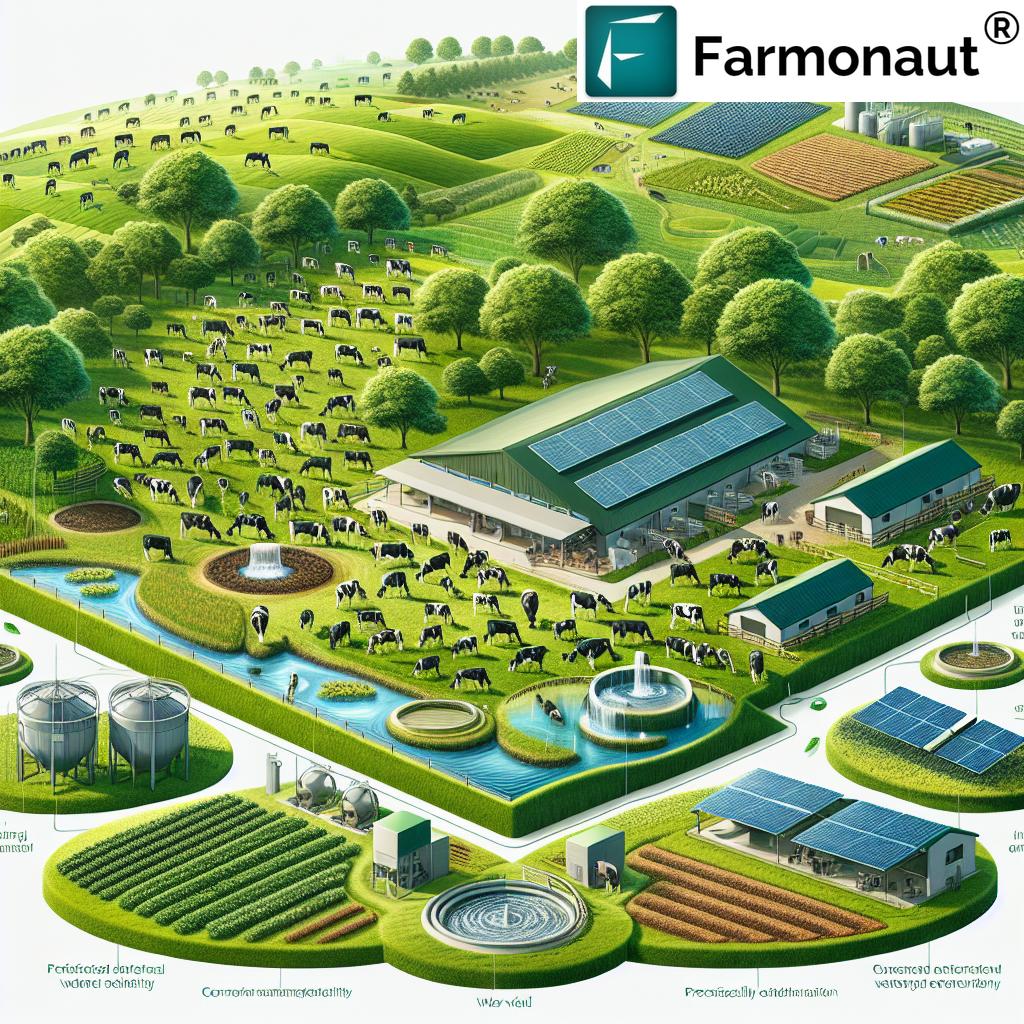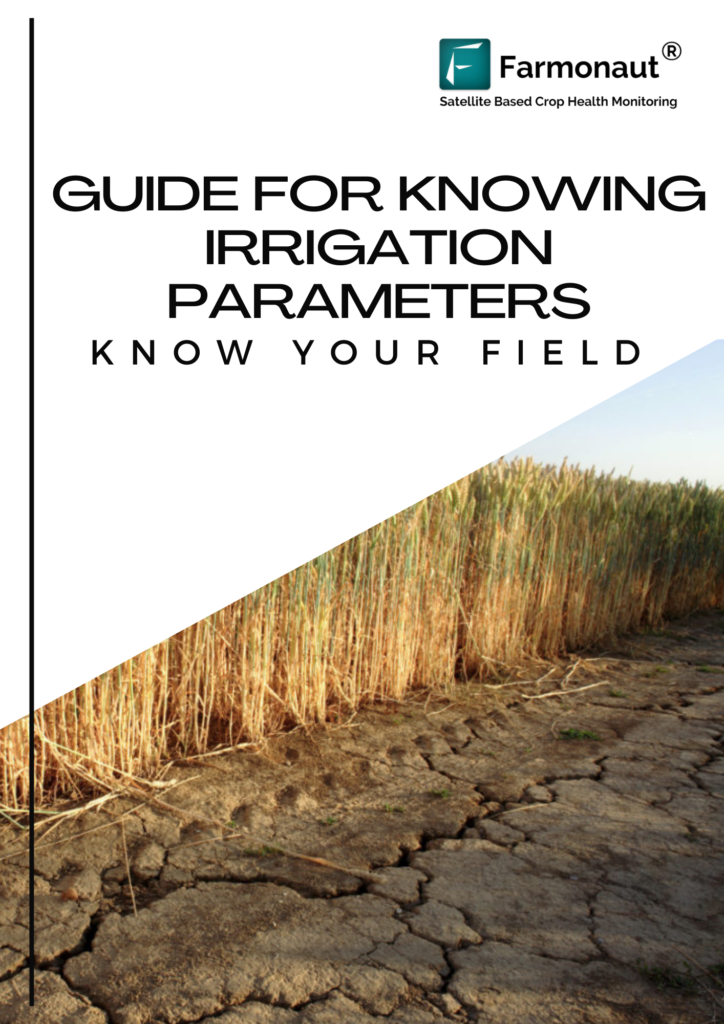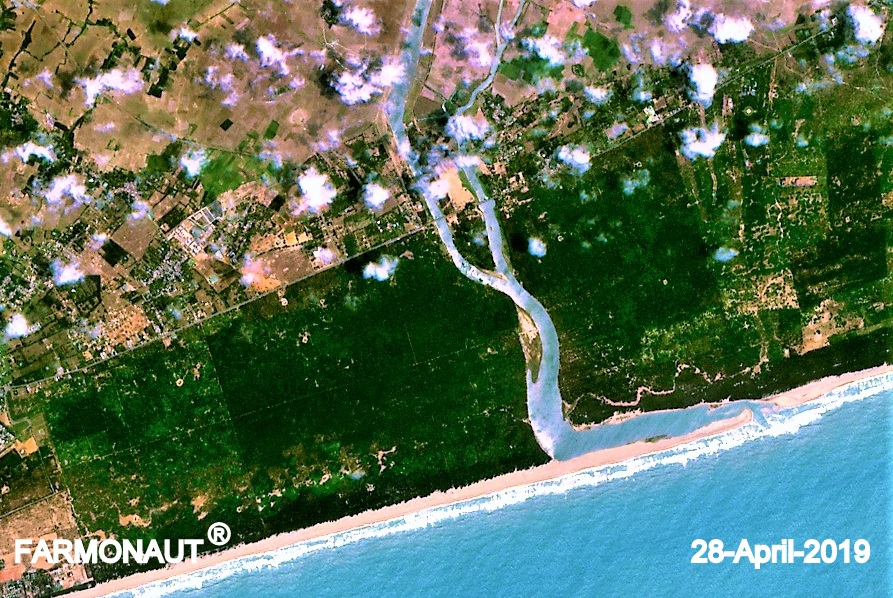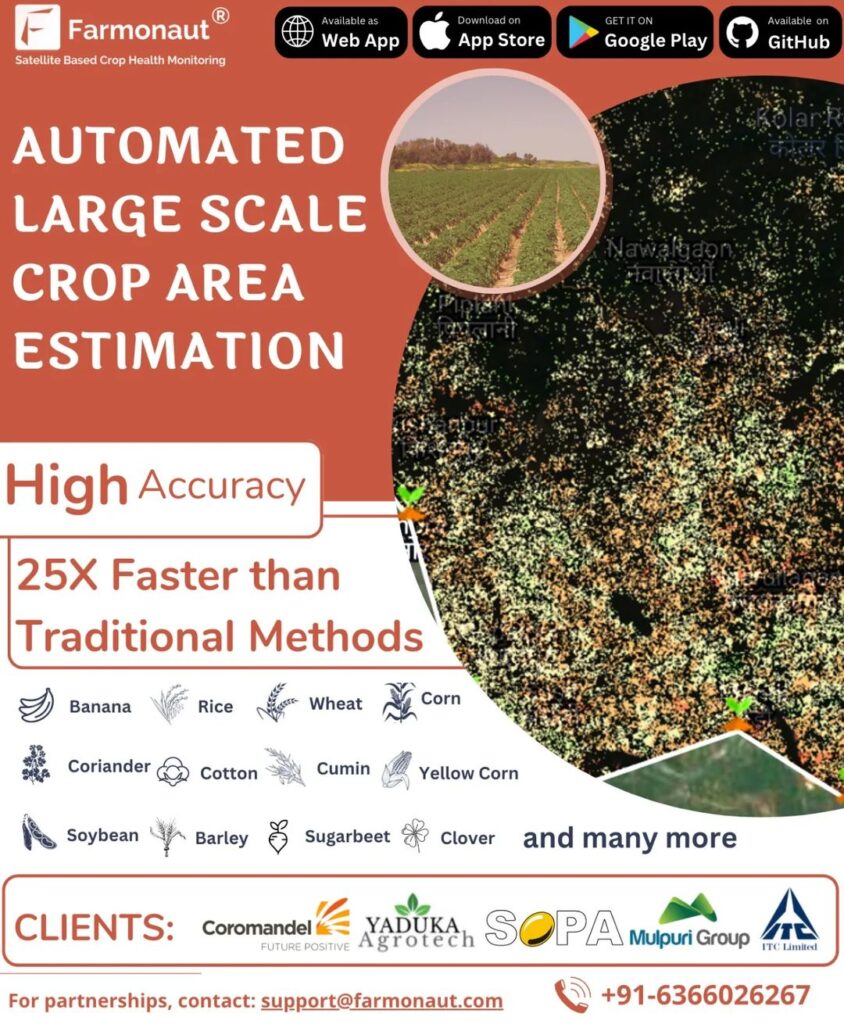Verticillium Wilt: Symptoms, Control, and Organic Treatment for Susceptible Crops

At Farmonaut, we understand the critical importance of protecting crops from devastating diseases like Verticillium wilt. This soil-borne fungal disease poses a significant threat to a wide range of plants, particularly affecting susceptible varieties of crops such as tomatoes, potatoes, and many others. In this comprehensive guide, we’ll delve deep into the world of Verticillium wilt, exploring its causes, symptoms, and most importantly, effective control and treatment methods, including organic approaches.
Understanding Verticillium Wilt
Verticillium wilt is a destructive plant disease caused by two species of soil-borne fungi: Verticillium dahliae and Verticillium albo-atrum. These pathogens can survive in the soil for extended periods, making them particularly challenging to eradicate once established in a field.
How Verticillium Wilt Affects Plants
The disease process begins when the fungus enters the plant through its roots. Once inside, it colonizes the vascular system, blocking water and nutrient flow. This leads to wilting, yellowing, and eventual death of the plant. Verticillium wilt can affect a wide range of crops, including:
- Vegetables: Tomatoes, potatoes, eggplants, peppers
- Fruits: Strawberries, raspberries
- Ornamentals: Chrysanthemums, roses
- Trees: Maple, elm, ash
Recognizing the Symptoms of Verticillium Wilt
Early detection is crucial for managing Verticillium wilt effectively. Here are the key symptoms to watch for:
- Wilting: Initially, plants may wilt during the day but recover at night. As the disease progresses, permanent wilting occurs.
- Leaf Discoloration: Leaves may develop yellow, brown, or red discoloration, often in a V-shaped pattern.
- Stunted Growth: Infected plants may exhibit reduced growth and smaller than normal leaves.
- Vascular Discoloration: Cutting into the stem reveals brown streaking in the vascular tissue.
- Premature Defoliation: Severely affected plants may lose their leaves prematurely.

Factors Contributing to Verticillium Wilt Spread
Understanding the factors that contribute to the spread of Verticillium wilt is essential for developing effective control strategies. Some key factors include:
- Soil Conditions: The fungus thrives in cool, moist soils.
- Plant Debris: Infected plant debris left in the field can harbor the pathogen.
- Susceptible Host Plants: Planting susceptible varieties increases the risk of infection.
- Soil Movement: Contaminated soil can spread the disease to new areas.
- Irrigation Practices: Overwatering can create favorable conditions for the fungus.
Effective Control and Treatment Strategies
Managing Verticillium wilt requires an integrated approach combining preventive measures and targeted treatments. Here are some effective strategies we recommend:
1. Crop Rotation
Implementing a proper crop rotation plan is crucial for managing Verticillium wilt. We advise rotating susceptible crops with non-host plants such as grasses or grains. This practice helps reduce the fungal population in the soil over time.
2. Resistant Varieties
Whenever possible, choose resistant plant varieties. Many seed companies now offer Verticillium wilt-resistant cultivars for various crops, especially tomatoes. These varieties can significantly reduce the impact of the disease in your field.
3. Soil Solarization
Solar solarization is an effective organic method for reducing soil-borne pathogens. This process involves covering moist soil with clear plastic during hot summer months, which raises soil temperatures and kills harmful organisms.
4. Proper Sanitation
Maintaining good field hygiene is essential. We recommend:
- Removing and destroying infected plant material
- Cleaning tools and equipment between uses
- Avoiding the movement of contaminated soil
5. Soil Health Management
Improving overall soil health can help plants better resist Verticillium wilt. Consider:
- Adding organic matter to improve soil structure
- Maintaining proper pH levels
- Ensuring adequate drainage
6. Biological Control
Certain beneficial microorganisms can help suppress Verticillium wilt. We recommend exploring the use of:
- Trichoderma species
- Mycorrhizal fungi
- Beneficial bacteria like Bacillus subtilis
7. Chemical Control
While we prioritize organic methods, in severe cases, chemical fungicides may be necessary. Always consult with a local agricultural expert before applying any chemical treatments.
Organic Approaches to Verticillium Wilt Management
At Farmonaut, we strongly advocate for organic farming practices. Here are some effective organic strategies for managing Verticillium wilt:
1. Compost Tea Applications
Compost tea, rich in beneficial microorganisms, can help suppress soil-borne pathogens and improve plant health. We recommend regular applications throughout the growing season.
2. Organic Soil Amendments
Incorporating organic matter like well-rotted compost or green manures can improve soil structure and boost beneficial microbial activity, helping to naturally suppress Verticillium wilt.
3. Biofumigation
Certain brassica crops, when incorporated into the soil, release compounds that can suppress soil-borne pathogens. This process, known as biofumigation, can be an effective organic control method.
4. Natural Fungicides
Some organic-approved fungicides can help manage Verticillium wilt. Options include:
- Neem oil
- Copper-based products
- Sulfur formulations
5. Plant-Based Extracts
Certain plant extracts have shown promise in suppressing Verticillium wilt. These include:
- Garlic extract
- Thyme oil
- Clove oil
Farmonaut’s Role in Verticillium Wilt Management
At Farmonaut, we’re committed to helping farmers and gardeners effectively manage plant diseases like Verticillium wilt through advanced technology. Our satellite-based crop monitoring system can assist in early detection and management of Verticillium wilt in several ways:
- Early Detection: Our high-resolution satellite imagery can detect changes in crop health before symptoms are visible to the naked eye.
- Precision Mapping: We provide detailed maps of affected areas, allowing for targeted treatment and resource optimization.
- Historical Data Analysis: By analyzing historical field data, we can help identify patterns and risk factors for Verticillium wilt outbreaks.
- Customized Alerts: Our system can send alerts when conditions favorable for Verticillium wilt development are detected.
To learn more about how Farmonaut can help you manage Verticillium wilt and other crop health issues, visit our website at https://farmonaut.com/app_redirect.
Comparison: Traditional Methods vs. Farmonaut Satellite System for Verticillium Wilt Detection
| Aspect | Traditional Methods | Farmonaut Satellite System |
|---|---|---|
| Detection Speed | Slow – Relies on visual inspection | Fast – Real-time satellite imagery analysis |
| Accuracy | Moderate – Subject to human error | High – AI-powered analysis of multispectral data |
| Cost-effectiveness | Low – Labor-intensive and time-consuming | High – Automated monitoring of large areas |
| Early Intervention Potential | Limited – Often detects disease after visible symptoms appear | High – Can detect stress before visible symptoms |
Integrating Farmonaut’s Technology into Your Verticillium Wilt Management Strategy
To maximize the benefits of our satellite-based monitoring system in managing Verticillium wilt, consider the following steps:
- Regular Monitoring: Utilize our platform to consistently monitor your fields for any signs of plant stress that could indicate Verticillium wilt.
- Data-Driven Decision Making: Use the insights provided by our system to make informed decisions about when and where to implement control measures.
- Precision Application: Apply treatments only where needed based on our detailed field maps, reducing costs and environmental impact.
- Proactive Planning: Use historical data and predictive analytics to plan crop rotations and select resistant varieties for high-risk areas.
For developers interested in integrating our technology into their own applications, we offer a comprehensive API. Visit https://sat.farmonaut.com/api for more information.
Case Studies: Successful Management of Verticillium Wilt with Farmonaut
While we don’t include specific case studies or success stories, our technology has been instrumental in helping numerous farmers effectively manage Verticillium wilt. By providing early detection and precise mapping of affected areas, we’ve enabled farmers to implement targeted control measures, significantly reducing crop losses and treatment costs.
The Future of Verticillium Wilt Management
As we look to the future, several promising developments are on the horizon for managing Verticillium wilt:
- Advanced Genetic Resistance: Ongoing research in plant breeding is focused on developing more resistant crop varieties.
- Precision Agriculture: Technologies like Farmonaut’s satellite monitoring system will continue to evolve, offering even more precise and timely detection of plant stress.
- Biological Control Agents: New strains of beneficial microorganisms are being discovered and developed for more effective biocontrol of Verticillium wilt.
- Nanotechnology: Emerging nanotechnology applications may offer new ways to deliver treatments directly to affected plant tissues.
Conclusion
Verticillium wilt remains a significant challenge for farmers and gardeners worldwide. However, with a combination of traditional wisdom, modern organic practices, and cutting-edge technology like Farmonaut’s satellite monitoring system, effective management is possible. By staying informed, implementing integrated control strategies, and leveraging advanced detection methods, we can minimize the impact of this destructive disease and protect our valuable crops.
Remember, early detection and prompt action are key to managing Verticillium wilt successfully. With Farmonaut’s advanced monitoring capabilities, you can stay one step ahead of this challenging plant disease.
To start using Farmonaut’s satellite monitoring system for your farm or garden, download our app:
- Android: Farmonaut on Google Play
- iOS: Farmonaut on App Store
For more detailed information on our API and developer resources, visit our API documentation.
Subscribe to Farmonaut
Frequently Asked Questions (FAQ)
Q1: Can Verticillium wilt be completely eradicated from the soil?
A: Complete eradication of Verticillium wilt from soil is extremely difficult due to the pathogen’s ability to survive for long periods. However, effective management strategies can significantly reduce its impact on crops.
Q2: How long does it take for Verticillium wilt symptoms to appear?
A: Symptoms can appear within a few weeks to several months after infection, depending on factors like plant species, environmental conditions, and the severity of the infection.
Q3: Are there any natural predators of the Verticillium fungi?
A: Yes, certain soil microorganisms like Trichoderma species and some bacteria can act as natural antagonists to Verticillium fungi.
Q4: Can crop rotation completely prevent Verticillium wilt?
A: While crop rotation is an essential management tool, it may not completely prevent Verticillium wilt due to the pathogen’s long survival time in soil. However, it can significantly reduce disease pressure.
Q5: How does Farmonaut’s technology detect Verticillium wilt before visible symptoms appear?
A: Our satellite monitoring system uses multispectral imagery to detect subtle changes in plant health and stress levels, which can indicate the presence of Verticillium wilt before visible symptoms develop.
Q6: Is organic management of Verticillium wilt as effective as chemical control?
A: Organic management can be highly effective when implemented as part of an integrated approach. While it may require more long-term planning, it offers sustainable control without the environmental concerns associated with chemical fungicides.
Q7: How often should I monitor my fields for Verticillium wilt using Farmonaut’s system?
A: We recommend regular monitoring throughout the growing season, with increased frequency during periods of higher risk. Our system can provide daily updates, allowing for continuous monitoring of crop health.
Q8: Can Verticillium wilt spread through irrigation water?
A: Yes, Verticillium can spread through contaminated irrigation water. Using clean water sources and maintaining proper irrigation practices can help minimize this risk.
Q9: Are there any beneficial crop combinations that can help reduce Verticillium wilt?
A: Some cover crops, particularly certain brassica species, have been shown to have biofumigant properties that can help suppress Verticillium in the soil when incorporated.
Q10: How can I integrate Farmonaut’s data with my existing farm management software?
A: Farmonaut offers API access that allows for integration with various farm management software. For more details, please refer to our API documentation.













